Microcars
1958 BMW Isetta 300
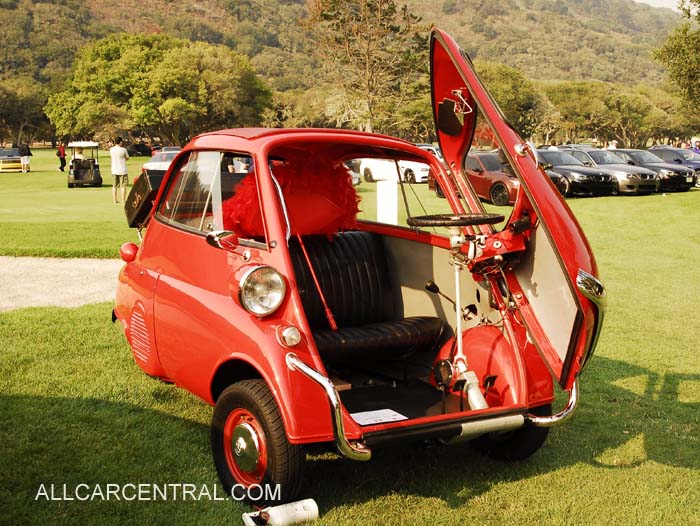
I recently read a review in the Hemmings magazine of an auction in Georgia in 2013 of a famous collector known as the "Weiner Collection". Which consisted of what today, we call microcars. Bruce Weiner collected in excess of 200 microcars over the years representing virtually every manufacturer. Some were easy to recognize other were not. At the close of the event a total of $9.1 million bucks passed hands to acquire such names as Messerschmitt... Isetta... Goggomobil... etc. By chance many years ago when I was a young father with an over drawn bank account I managed to rake up enough money to buy a microcar known in those days as a Bubble Car. Made by another German manufacturer better know during the war as Henkel who made bombers. It was the standard three wheel vehicle with a 195 cc four stoke engine that needed attention every weekend to readjust the over head valves. I can't recall the MPG but I do know that with a decent tail wind it would touch fifty MPH, however I would not describe that as an enjoyable experience as my wife reputedly remarked while my six year daughter sitting in the tiny rear set expressing delight.
1955 Messerschmitt KR200
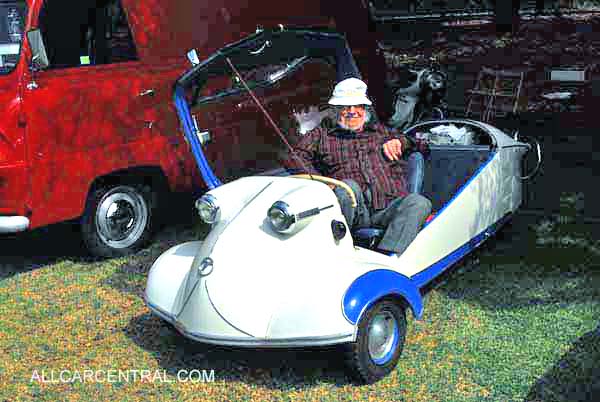
The market at that time consisted of three major manufacturers all German. My vehicle...The BMV Isetta that came with an option of either a single or double drive wheel at the rear and the Messerchmitt that in reality was a motor cycle with a hard top! I know there were others like the Goggomobil that looked just like a normal car but in reality was about half the size of any popular private car. Also the famous FIAT 500 that really was 500 cc. (Today the car with the same name that is now on the roads of America is at least twice that size engine.)
1960 Goggomobil
Submitted by Rick Feibusch 2008
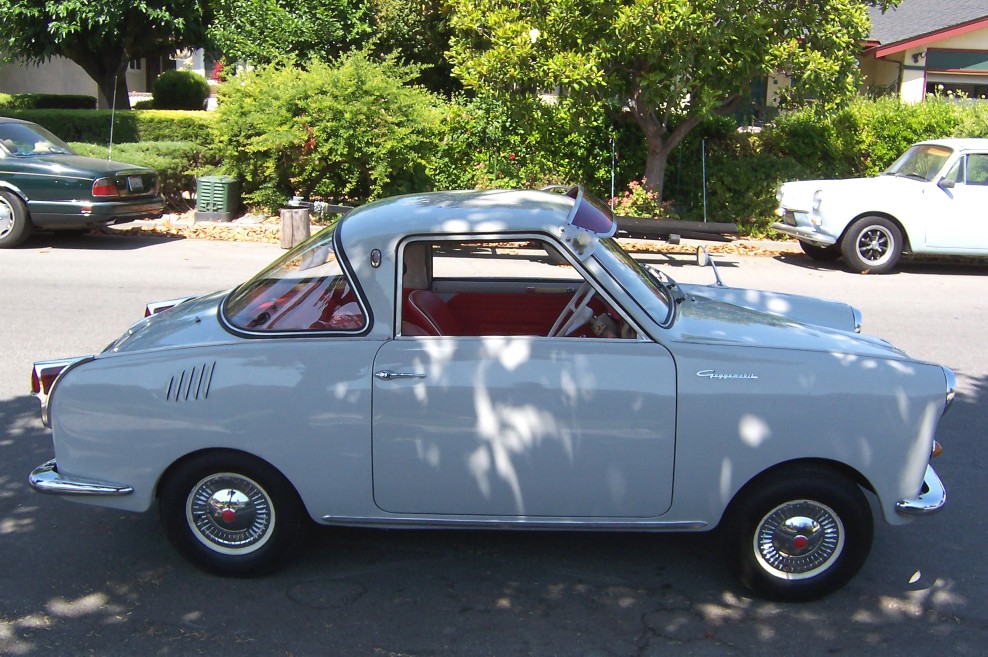
The attraction of the three wheel bubble car was price, nothing more, or nothing less compared with the four wheel (On each corner), economy vehicles. The most successful was the BMW Isetta as far as sales were concerned and it also saved the company from bankruptcy after the war. This may be hard to believe but the BMW factory was located in the Russian sector of occupied Germany and was reduced to making pots and pans and a few other domestic items to survive. If you are interested in that story take a look at my article published in this publication a few years ago entitled" The Company That Refused to Die", it's quite an interesting example of the post war German sprit, and of course the help that was given to reach that goal. The actual Isetta design was Italian and in many ways it shows when you look at the lines etc.
FMR Tg500 1958-1961
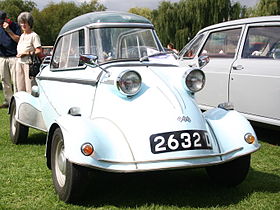
Returning to the auction a 1958 FMR Tg 500 Tiger hit the top of the sales list at a cool $280,000.
If you are not quite familiar with this car let me simply say that it looks just like a Messerschmitt but has a larger engine and a few other attractions that to be honest I am not familiar with.
[FMR Tg500 Microcar built by Fahrzeug- und Maschinenbau GmbH, Regensburg (FMR) from 1958 to 1961 based on the monocoque of the Messerschmitt KR200 three-wheeled car with a forth wheel added. FMR had taken over production of the KR200 from Messerschmitt in 1956. While the KR200 still used the Messerschmitt name and logo, the Tg500 was badged as a FMR. (Ed.)]
The report says that this figure was a record price for a microcar and I can believe it when, for the same money you could buy a decent example of a classic Rolls or Mercedes-Benz.
If you are old enough to remember when these vehicles first came on the market around the mid 1950's the demand was at best limited and the prices were in much the same ball park.
1971 Fiat 500L
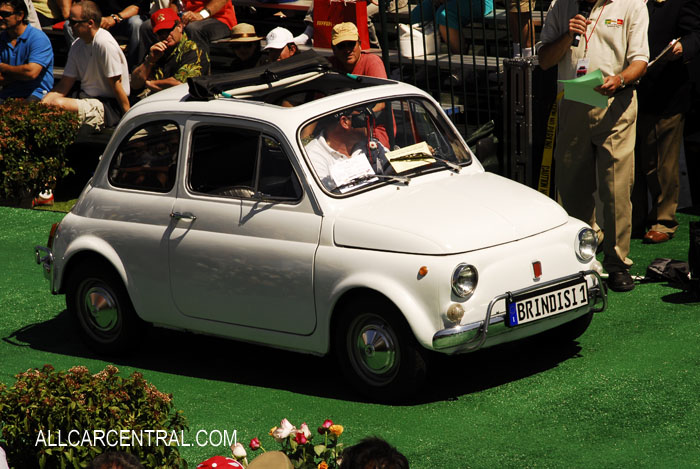
The majority of people who purchased such things were usually owners who wanted to be different and others like me who had to take what was available in my limited price range, make that a very limited price range. I think that somehow I managed to scrape up about $200.
For my second hand bubble car, this was around 1960/61. The cheapest second hand real car, described by the dealer as a "Nearly New", was about twice that price.
Looking back I have to say that one felt that they were taking their life in their hands every time I ventured onto the highway. The wheels of the trucks seemed almost as large as my three wheel vehicle.
Peel Trident 1964
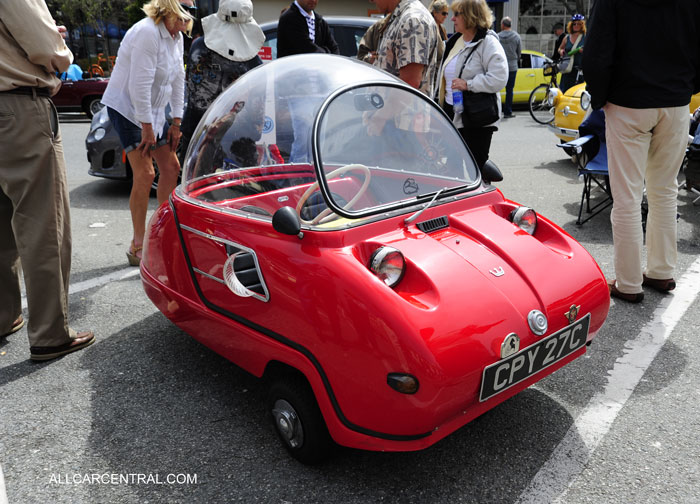
The final parting of the way came when I hit a snow pile at the side of the road and landed up in the local hospital for a couple of days. No serious damage to the driver or car but it was traded in for a more conservative four wheel family hack that was not unique in any way and did not attract the attention enjoyed by my bubble machine, but it was a lot safer! If you are seriously interested in these microcars and by chance happen to be in Crystal Lake Illinois you should visit Ken Wegers's museum aptly named "Small Wonders Microcar Museum". Ken has been collecting these vehicles for many years and is recognized as having one of the most extensive collections in the world. I don't think anyone ever imagined that these toy cars would ever become serious collector's items, some fetching prices in the six figure range. But as we now know it happened.
As we often hear people saying "If Only I Had Kept" etc. Well that's certainly how this scribe feels after reading the revive of the microcar auction in Georgia last year.
Geoff Wheatley
BACK TO TOP